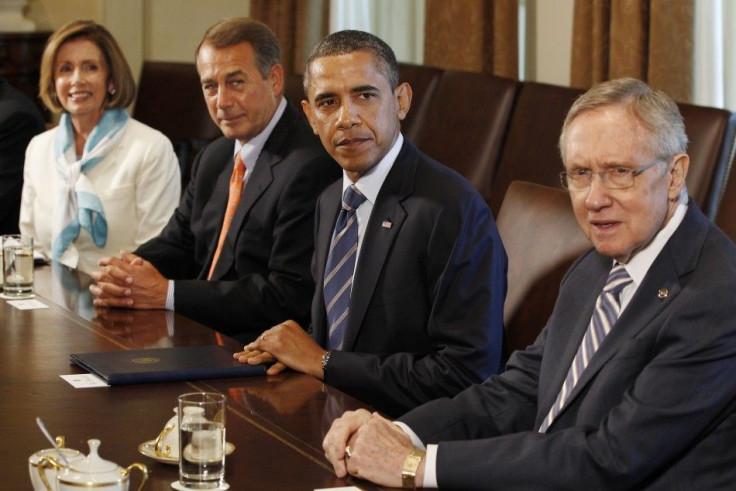Debt Talks: Whom Does America Owe?

Lawmakers in Washington and President Obama are currently discussing raising the debt ceiling so that the nation doesn't default on $14.3 trillion worth of loans. Republicans and the President have been at a standstill over the details of the proposed plan, but the August 2nd deadline is looming.
But to whom does the United States owe all this money? Most people know that the U.S. owes China a significant amount of cash. But, the U.S. has borrowed more from other places than from China.
A report from Global Post breaks down where the staggering debt figure comes from. The United States owes China a total of $1.16 trillion, which is about eight percent of the total amount.
The most significant loans come from within the United States, and the government has borrowed a substantial amount from itself. The U.S. owes its own treasury $1.63 trillion, and a whopping $2.67 trillion (19 percent of the debt) has been borrowed from the Social Security trust fund. The government also owes $959.4 billion to private households, $504.7 billion to private pension funds, $320.9 billion to state, local and federal retirement funds.
The banking industry has also backed the nation that just a few years ago revived it. Money market mutual funds lent $337.7 billion, commercial banks: $301.8 billion and mutual funds: $300.5 billion.
Putting these numbers in perspective, this means that the government has a domestic debt of $9.8 trillion, compared to an international debt of $4.5 trillion.
The biggest international lenders include:
- Hong Kong, $121.9 billion
- Caribbean banking centers, $148.3
- Taiwan, $153.4 billion
- Brazil, $211.4 billion
- United Kingdom, $346.5 billion
- Japan, $912.4 billion
- China, $1.16 trillion
These figures must be in the back of lawmakers' minds as they meet in Washington D.C. to discuss the nation's future. Yes, China is a serious creditor, but so are the American people.
© Copyright IBTimes 2025. All rights reserved.





















